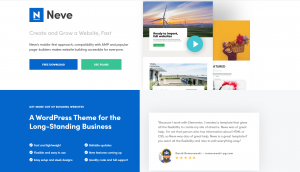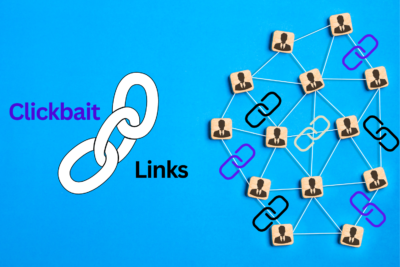Do you know how to organize the work Agile Methodology process at your website design & development company effectively? Do you know what technique is best for a web development team? We have an answer! Agile. Notably, California Web Design and website developers use the Waterfall Methodology, process, or a traditional approach to website design and product development.
At the same time, Agile Methodology is carried out sequentially and has a more rigorous workflow, which might make it less successful in specific scenarios. Agile produces important metrics like lead time, cycle time, and throughput that help measure the team’s performance, identify bottlenecks, and make data-driven decisions to correct them. Thus, the Agile framework is a vital tool.
It helps managers, team members, and clients. The benefits of Agile are numerous, from improving the quality of the product to assisting in the professional development of the team members. It allows teams to overcome pitfalls like high costs and scope creep. According to digital.ai’s 14th annual State of Agile report, 95% of their 40,000 respondents said their organizations employ it.
They apply Agile development approaches, with 61% saying they’ve been using Agile for over three years. Agile provides many advantages over traditional project management approaches for those who accept it. Why has it gotten so popular? Let’s find out. This article will explore the benefits of utilizing the Agile Methodology in website design & development project processes.
Understanding The Agile Methodology In Website Design & Development
To enumerate, Agile Methodology in website design and development is a principle based on professional experts’ ideals outlined in the Agile Software Development Manifesto for creatives. A group of competent developers founded it in 2001. The primary purpose of this method is to give flexibility and satisfy the client through early and continual delivery of valuable software.
Agile today is one of the most popular approaches to project management because of its flexibility and evolutionary nature. Over time, agile project management evolved and became a popular choice for many project managers, irrespective of the industry. In a nutshell, Agile is an iterative and incremental approach to project management that helps teams stay in various environments.
Such as keeping up with the demands of the modern workplace. It consists of different methodologies, all based on the concepts of flexibility, transparency, quality, and continuous improvement. Data from 2018 indicates that projects using Agile methodologies are 28% more successful, and almost 71% of organizations use Agile with varying frequencies. A few things make it so successful.
Most project managers rely solely on it or are using it with other frameworks—the reason behind it is simple. It makes the managers’ jobs easier and gives them greater control over their projects. Agile project management is unique because it focuses on delivering quality and value to the customer and completing the project within the given project constraints.
The whole process fundamentals:
- Documentation is less crucial than functional software.
- Customer collaboration should be prioritized at all phases of development.
- Individuals and interactions should control tools and procedures.
- Responding to change is more beneficial than carefully adhering to a plan.
In Agile Project Management, testing is an integrated part of the project execution phase which means that the overall quality of the final product is excellent. The client remains involved and can request changes depending on the market realities. Since it is an iterative process, self-organizing teams keep learning and growing with time and continue improving.
The Advantages Of The Agile Methodology In Website Design & Development
First, the metrics used by Agile teams in estimating time and cost and measuring project performance are more accurate and relevant than the ones used in traditional methodologies. Secondly, Agile emphasizes producing results and optimizing performance, while the metrics in Waterfall Methodology show how closely the project is tracking against the estimated cost and time.
Agile produces important metrics like lead time, cycle time, and throughput that help measure the team’s performance, identify bottlenecks, and make data-driven decisions to correct them. On that note, if you think Agile Methodology is the right fit for your next project, you need to know the different tools used in Agile to gather more helpful information. Below are more advantages.
1. Higher Customer Satisfaction
The client is constantly involved in the web development process. As such, the product owner is aware of the results of each sprint due to its high visibility. Because the customer is applied throughout the project, they may monitor the progress and propose changes or upgrades as needed. In Agile, the customer is always involved in the whole decision-making process.
At the same time, this leads to more excellent customer retention. In the traditional framework, the customer is only involved in the planning phase and does not influence execution, affecting flexibility and adaptability. By keeping the customer in the loop and making changes according to their feedback, you deliver value to them and ensure that the final product is viable.
2. Increased Project Control
Because the project involves several stakeholders, the agile method allows them to maintain greater control. Team members understand their roles and actively engage in the process. The development team has daily stand-up meetings to keep track of the project’s progress. Furthermore, it includes planning sessions that allow team members to think and prepare for the next sprint.
Another benefit of Agile Project Management is significantly reduced go-to-market time. This allows the product owner to capitalize on the opportunity and, in some cases, enjoy the first-mover advantage. When customers want these benefits because of your performance, it’s natural that they’ll return to you for other projects.
3. Focus On Values
The approach used by agile website design allows the customer to prioritize desired features. This engagement increases the relationship between the project team and the client, allowing the project team to interpret the emphasis point throughout the project. This allows the team to focus on what is essential for the client’s business and provides the highest value for the company.
Agile teams have increased autonomy and authority over their decisions as they are self-organized and self-managing. Usually, the project manager shields the team from interference from sponsors and management. Still, the cross-functional nature of the groups also helps the members learn new project management skills and grow in their current roles.
Likewise, the team gets together frequently to discuss challenges and statuses, letting them collaborate better. Since the team size is limited, Agile provides an environment where teams are close-knit and can have flexible team structures.
4. Regular Checkups
Testing is incorporated throughout the development cycle in agile development. This implies regular inspections guaranteeing that the product operates properly during development. One of the 12 core principles of the Agile manifesto is working on self-reflection and striving for continuous improvement. The Agile Methodology works in iterations.
Each sprint will be better than the last one, and previous mistakes will not be repeated. Agile methodologies foster an open culture of idea exchange and collaboration, allowing team members to learn from shared experiences and improve together.
5. Faster Product Launch
One of the most important benefits of the Agile approach is that it helps California web design to create websites quickly. In the traditional technique, the website is launched at the end of the project. As a result, gathering input from stakeholders becomes a time-consuming effort, and when the product is ready for launch, adjustments are made to the product.
The agile approach, on the other hand, focuses on improving your product frequently due to the availability of immediate feedback.
6. Reduced Risks
The agile technique removes the possibility of total project failure. This strategy promotes open communication between the customer and the web development team, which is ideal for individuals who value transparency. With increased visibility, predicting risks and developing effective mitigation plans becomes easier. Within its framework, there are more significant ways.
In particular, ways to identify and predict risks and plan to ensure that the project runs smoothly. Scrum methodology, for example, uses sprint backlogs and burndown charts to increase the project’s visibility, allowing managers to predict performances and plan.
7. Transparency
The agile technique emphasizes working collaboratively to achieve development goals. The team meets daily to assess each team member’s progress. The agile method allows clients to actively participate in every project step, including project planning, iterations, and developing new features.
Every team member knows each other’s assigned duties, and everyone actively plans, evaluates, and tests from the outset. As a result, it promotes greater openness and fosters a healthy work atmosphere.
8. Adaptability
The central theme of Agile is adaptability. Agile teams are adaptable and sensitive to change, even at the last minute. Because project deliverables are not written in stone, teams may readily review their plans and alter their priorities to line with current goals. Being flexible implies that teams can produce consistently and successfully handle shifting customer expectations.
When Agile is genuinely implemented in a project team, it empowers them with unparalleled flexibility. Teams work in smaller bursts and are supplemented by the constant feedback and involvement of the product owner.
In other project management methodologies, changes usually are time-consuming and costly. However, Agile divides the project into short, manageable, and flexible sprints, allowing the team to implement changes on short notice. This unmatched flexibility is one of the top reasons dynamic organizations prefer using Agile in their project.
9. Lower Costs And Faster ROI
Because agile website design is iterative, its features are supplied progressively, and the related advantages are realized early in the design process. Because the product is released quickly, design changes can be made based on client reaction and satisfaction. This, in turn, offers the customer an advantage over the competitors.
With agile California web design, the customer is wholly involved in establishing project requirements and the costs associated with each stage. Every expense is always openly discussed with the team. Rather than a usual upfront fee, payments are made in recurring installments as the project develops from one stage to the next.
Clients are presented with the costs connected with each Sprint stage and can cut back on non-essentials, lowering the overall cost. Long term, earning a lower budget permits spending on other services that assist in raising goals, such as organic (SEO) Search Engine Optimization, PPC, social media, and so on.
10. Better Communication
Agile teams value face-to-face contact and continual engagement. They will usually convene daily meetings to ensure everyone is on the same page and working towards the same goals. They prevent misunderstandings by communicating often. The Agile technique has various advantages for teams in software development and other sectors.
But how does it compare to different project management methodologies? It gives managers better control over the project due to its transparency, feedback integration, and quality-control features. Quality is ensured throughout the project’s implementation phase, and all stakeholders are involved in the process with daily progress reports through advanced reporting tools and techniques.
In Conclusion;
You may better understand why Agile Methodology is preferable for website design and development. While many businesses continue to use the classic waterfall approach while producing projects, most organizations are incorporating agile methodologies into their operations. It entirely relies on project design and development needs, whether you should go agile or waterfall.
Eventually, this is essential because you may gain a rapid understanding of the benefits of an agile approach. In theory, any project using an Agile methodology will never fail. Agile works in small sprints that focus on continuous delivery. A small part can always be salvaged and used in the future, even if a particular approach doesn’t go as planned.







